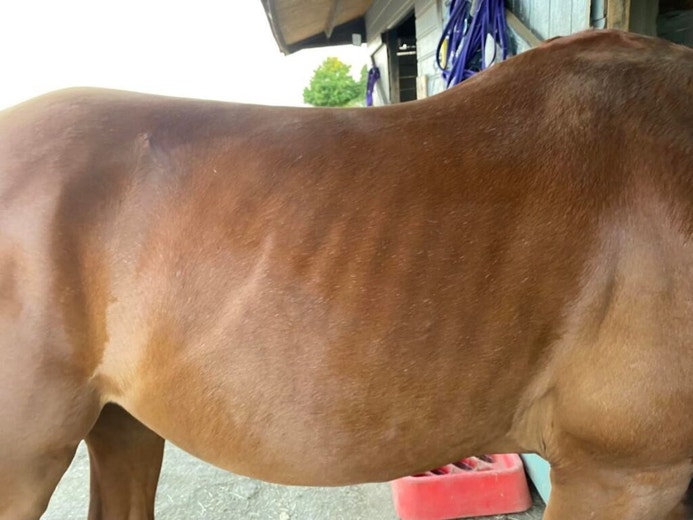#SPILLERSScience: travelling could lead to false diagnosis of insulin dysregulation

New research led by Erica Jacquay and Dr Amanda Adams from the University of Kentucky, in partnership with SPILLERS, has shown that testing for insulin dysregulation, which is the core component of Equine Metabolic Syndrome (EMS), within 3 hours of travelling could lead to a false positive. This research is an important step in improving our understanding of insulin dysregulation and has been selected as one of the most clinically relevant pieces of research published in the Equine Veterinary Journal’s early view section this month.
Insulin dysregulation: why it matters & how’s it diagnosed
The oral sugar test is a commonly used method of diagnosing insulin dysregulation and involves measuring the concentration of insulin in the horse/ pony’s blood before and after consuming a set amount of sugar syrup given by syringe.
Insulin dysregulation is a major risk factor for laminitis. In fact, laminitis associated with a high concentration of insulin in the blood (hyperinsulinemia) is now thought to be the most common form of laminitis in the UK.
The research: what we did & what we found
To evaluate the effect of short-term travelling stress on insulin response, seven insulin dysregulated (ID) mares and seven non-ID mares were transported in groups for approximately 1.5 hours. An oral sugar test was completed 24 hours before and 3-hours after travelling.
As expected, insulin levels were higher in the insulin dysregulated mares on both occasions, but the oral sugar test was also positive for 5 out of 7 of the non-ID mares after travelling. This suggests that in a ‘real life’ situation some horses may have been misdiagnosed as having insulin dysregulation and be falsely considered as having EMS.
The research: why it matters
We now realise that the core factor linking EMS to an increased risk of laminitis is having insulin dysregulation rather than being obese. Whilst being obese increases the risk of being insulin dysregulated (ID); importantly lean horses and ponies can be ID too, meaning it is really important to test, if concerned, regardless of body condition. The term ‘EMS’ was first coined in the early 2000s and although knowledge has improved greatly, there’s still a lot we need to learn. Improving our understanding of insulin dysregulation, including how to diagnose it more accurately, is key to improving our ability to identify and manage those at greatest risk of laminitis.
Veterinary assessments and investigations can be time consuming, expensive and stressful (for horses and their owners!). If you need to take your horse to the vet as opposed to the vet visiting you, ticking multiple things off the list in one visit can certainly make sense in some situations. However, this research shows that when it comes to testing for insulin dysregulation, we may need to rethink our strategy, as testing after travelling may lead to a false diagnosis. More work is needed to identify the ‘best time’ to test – watch this space!
Want to read more?
The research abstract (short summary) is available from the Equine Veterinary Journal can be viewed for free here.
Reference
Jacquay ET, Harris PA, Adams AA. The impact of short-term transportation stress on insulin and oral sugar responses in insulin dysregulated and non-insulin dysregulated horses. Equine Vet J. 2024. https://doi.org/10.1111/evj.14403
17.10.2024





